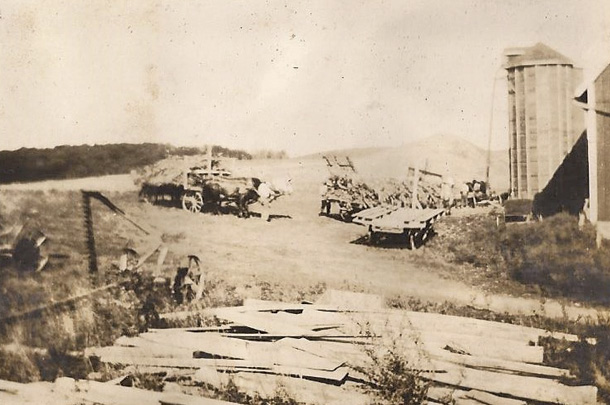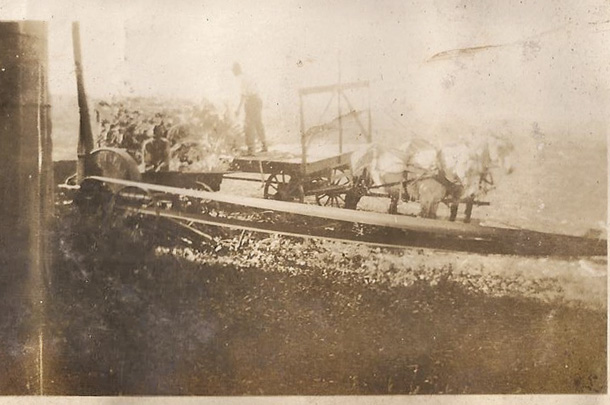As a young woman, my mother, Ruth Elbert, put together three large photo albums of her family and her ancestors before marrying my dad. She highly valued these photo albums and always kept them tucked away in her cedar chest.
Once in a great while, when one of us kids would get sick and we were recovering in the house, Mom would get her old photo albums out for us to look at. I always found them very, very interesting. Looking at the old pictures, some of them over 100 years old, would always lead me to ask a bunch of questions. I wish I could remember all the answers Mom gave me, but that was many years ago and now Mom has been gone for some time.
Fortunately, I do remember a lot of her answers. I don’t have her photo albums; I wish I did. But a number of years ago, I was able to borrow two of them for a short time, and I was able to copy a few of the old pictures in it.
Two of the pictures are printed along with this story. They were taken in the 1920s on my Grandpa Elbert’s farm near Augusta, Wisconsin. They show how greatly agriculture has changed in the last 100 years.

Horses pulling wagon loads of cornstalks to the silo. Photos provided by Tom Heck.
Picture 1 shows horses pulling flatbed wagons loaded with cornstalks into the small silo to be chopped into corn silage. There were no tractors and chopper boxes to haul it in back then, which we have now on our farm. And, I must admit, a lot of the bigger farms today don’t even use tractors and chopper boxes anymore. They use big trucks or even semi trucks to haul it in from the fields. Think about it: One semi truck would have probably filled my grandpa’s silo full. It took many flatbed wagons loaded with cornstalks to fill Grandpa’s silo and many men working hard to do it.

A farmer feeding cornstalks into the silo filler. Photo provided by Tom Heck.
Picture 2 shows a man feeding the cornstalks into a silo filler that chops the corn into silage and blows it up into the silo. It also shows another man on the wagon handing him the corn. Now, they considered themselves greatly blessed; they had a steam engine to power the silo filler using a large belt.
There were also men out in the field cutting the corn and a man hauling the wagons back and forth with the horses. It was a big, labor-intensive operation. The neighbors would get together and help each other fill their silos, putting all their equipment and horses on each other’s farms.
More than 100 years later, I take a big tractor with a chopper and chopper box hooked behind it, and chop it full of corn silage. My son then pulls the loaded box in from the field with a tractor and unloads it at the blower in a few minutes’ time while I chop another box full.
What can I say? It’s a lot easier and faster, and it saves a lot of manpower, for which I’m very thankful. Things have certainly changed from 100 years ago. Sometimes change is good and sometimes it’s very bad. I look back at the morals, virtues and the fear and reverence for God the American people embraced 100 years ago, and it’s shocking to see how things have so changed today.
So much of our society today has put God totally out; they live only to please themselves. No matter how much advancement we have in technology and so forth, if we as a nation do not change and return to God’s ways, we will receive God’s judgment. God never changes; the Bible says: “Jesus Christ the same yesterday, and to day, and for ever” (Hebrews 13:8 KJV). He judged other nations in the past when they went against Him; He will certainly bring judgment on us too.
We as individuals need to search our hearts and make sure we’re right with God. The Father is loving and gracious, still receiving sinners. I know – He received me years ago when I didn’t think my life was worth living. He will do the same for anyone who comes to Him in faith and repentance.



